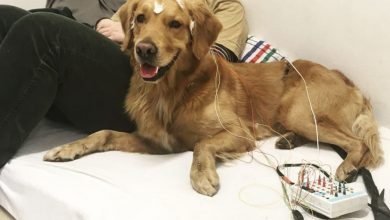What Is A Hock On A Dog

1. Introduction
The hock joint, also known as the tarsal joint, is an important part of a dog’s anatomy. It is located on the hind legs and is responsible for providing stability and support for the animal when walking and running. This joint is also important for providing a range of motion that allows a dog to move freely and comfortably. In this article, we will discuss what a hock on a dog is, its anatomy, common health issues associated with it, and ways to prevent and treat hock injuries in dogs.
2. What is a Hock on a Dog?
A hock on a dog is an essential joint located at the back of the hind leg, just above the paw. It consists of several bones which are connected by ligaments, tendons and muscles that provide stability and mobility to the leg. The hock joint is responsible for providing support during activities such as walking, running, jumping and turning. It also helps to absorb shock when the dog lands after jumping or running.
3. Anatomy of the Hock Joint
The hock joint is made up of several bones including the talus bone, calcaneus bone, tibia bone and fibula bone. These bones are connected by ligaments which provide stability to the joint and allow for movement in multiple directions. The muscles in this area help to control movement of the leg while providing support for activities such as running and jumping.
4. Common Health Issues with the Hock Joint
Common health issues associated with the hock joint include arthritis, tendonitis, bursitis and fractures. Arthritis can cause inflammation in the joint which can lead to pain and stiffness. Tendonitis occurs when there is inflammation of one or more tendons which can lead to pain and limited movement in the leg. Bursitis occurs when there is inflammation of one or more bursae which can cause swelling and pain in the area. Fractures can occur if there is excessive force applied to the joint which can lead to severe pain and difficulty walking or running.
5. Diagnosing and Treating Hock Injuries in Dogs
In order to diagnose a hock injury in dogs, your veterinarian will need to perform a physical examination as well as take x-rays or other imaging tests such as an MRI or CT scan. Once an injury has been identified, treatment options will depend on the severity of the injury but may include rest, medications to reduce pain and inflammation, physical therapy or surgery.
6. Prevention of Hock Injuries in Dogs
The best way to prevent hock injuries in dogs is through proper exercise and conditioning programs that strengthen muscles around the joint area as well as increasing flexibility through stretching exercises before activity. It’s also important to ensure that your dog has access to proper nutrition so that their joints are kept healthy and strong over time. Additionally, providing your pet with soft bedding can help reduce stress on their joints while they sleep or rest throughout the day.
7. Different Types of Surgery for the Hock Joint
Depending on the severity of an injury or condition affecting your dog’s hock joint there are several different types of surgery that may be recommended by your veterinarian including arthroscopy (a procedure used to diagnose problems within a joint), arthrotomy (a procedure used to remove damaged tissue from within a joint), tendon repair (used to repair torn tendons) or fracture repair (used to repair broken bones).
8. Exercise and Physical Therapy for the Hock Joint
Exercise and physical therapy are important components of recovery following an injury or surgery involving your dog’s hock joint. Exercises should be tailored specifically for your pet’s individual needs but may include stretching exercises such as circles with their paw or range-of-motion exercises such as stepping over low obstacles like cones or stairs with their hind legs only. Your veterinarian may also recommend swimming as it helps build strength without putting too much strain on joints while providing resistance against movements that could further damage them if done incorrectly on land-based activities alone..
< h2 > 9. Rehabilitation for Dogs with an Injury to the Hock Joint
Rehabilitation for dogs with an injury to their hock joint typically involves rest followed by gradually increasing levels of activity depending on how quickly your pet recovers from their injury or surgery . During this period , you should monitor your pet closely for any signs of pain , swelling , limping , stiffness , etc . If any of these symptoms occur , you should contact your veterinarian immediately . Additionally , you should ensure that your pet receives proper nutrition during this period so they can heal quickly .
< h2 > 10 . Prognosis for Dogs with an Injury to the Hock Joint
The prognosis for dogs with an injury or condition affecting their hock joint depends on many factors including age , breed , overall health status , type of injury/condition , etc . Generally speaking , most dogs make full recoveries from mild injuries within several weeks while more severe injuries may take months before they fully recover . However , if left untreated certain conditions affecting this area can lead to permanent damage so it’s important that you seek medical attention from your veterinarian immediately if you suspect something may be wrong .
< h2 > 11 . Conclusion
The hock joint plays an important role in allowing our canine companions freedom of movement while providing them with stability during activities such as walking , running , jumping , etc . Common health issues associated with this area include arthritis , tendonitis , bursitis and fractures . Treatment options depend on severity but typically involve rest followed by medications , physical therapy/exercise programs or surgery . Additionally , proper nutrition , exercise programs tailored specifically for your pet’s needs and soft bedding can all help prevent injuries from occurring in this area .



